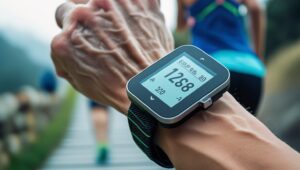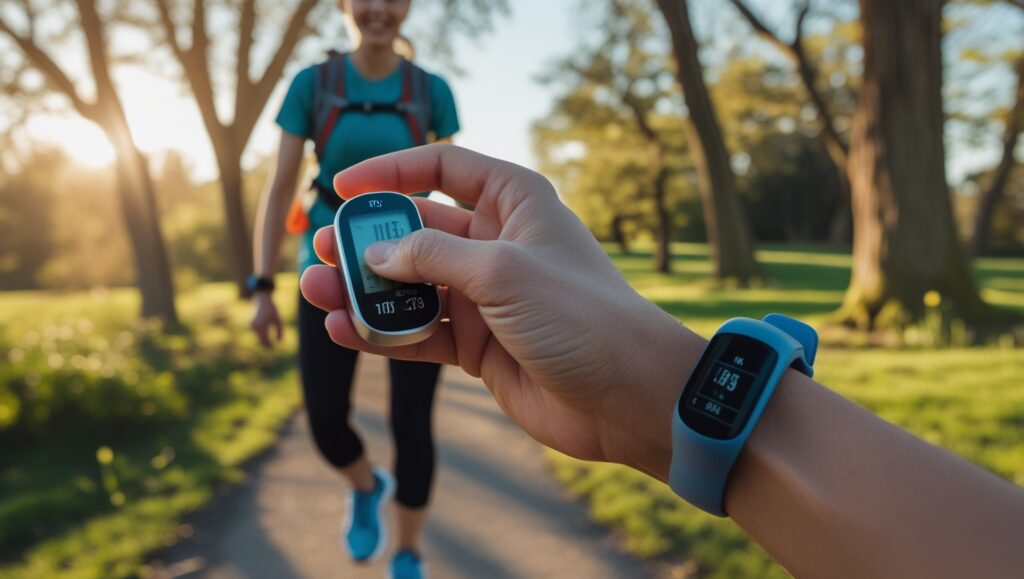There are a so many health benefits to keeping active, from heart health to mood and mental clarity. One simple, inexpensive measure which can help to attain the goal is the pedometer. A pedometer, which counts steps and monitors movement during the day as you walk, is a motivating and educational tool to help you become aware of your daily activity.
This article is devoted to the discussion of pedometer-based physical activity with particular attention to its potential to help promote an active lifestyle, how pedometers work, and why they make a difference.Given that many walkers wear pedometers every day, the discussion also covers some tips and guidelines to put an odometer into daily practice. Whether integrated into a fitness plan or simply used to monitor steps, a pedometer can play an effective role in fostering long-term physical activity.
What Is a Pedometer?
Pedometer is a small gadget that used to count steps while you are walking, running or jogging. Pedometers are traditionally worn on the waist some attach with a belt clip, although pedometers have become quite small and are often available as a feature in a smartphone, inside a smartwatch, or built into other portable or wearable household devices such as a smartphone.
The purpose of a pedometer is to record steps taken, though many models calculate distance, calories, and other information by inputting user data including weight, age, and stride length. Some have added features such as activity reminders, goal-setting, and progress-monitoring.
How Pedometers Encourage Physical Activity
1. Goal Setting and Motivation
When we think about how does a pedometer help keep an active lifestyle the most, we’d say through goal setting. This kind of routine goal, where people are told to strive for a “norm,” like 10,000 steps per day, is a motivational target that makes people want to be more active.
Step goals are easily programmed, and you receive instant feedback that fuels motivation and provides a sense of accomplishment as goals are reached. This feedback loop can really multiply motivation, allowing people to be more driven to taking those little healthy steps during the day, like taking stairs instead of elevators and walking rather than driving short distances.
- Heightened Sensitivity to Movement
Many underestimate or overestimate their usual activity level. A pedometer offers precise, in-the-moment feedback that provides real data on actual activity levels. This heightened sense of awareness is frequently followed by changes in behaviour.
So, for instance, a person who sees that activity levels are low by lunch may go for a brisk walk during a break. With practice, these consciously monitored guidelines will take on a life of their own and become automatic and integrated into daily mobility.
3. Behavioral Accountability
A pedometer serves as a subtle form of accountability. Realizing every step is being recorded can motivate users to move more even when they otherwise feel lazy. The product is a constant Manhattan-esque reminder to add more movement to mundane tasks; walking while on the phone, pacing while waiting for short computer tasks to finish.
In this manner, the pedometer makes passive behavior active, with physical activity now becoming a part of daily life.
4. Progress Tracking Over Time
Regular monitoring of long-term progress is key to keeping the body healthy and active. The majority of pedometers save daily steps, so you can look at your weekly, monthly or yearly pedometer cumulative history. This information can be used to spot trends and make changes in habits.
It is hard for users to forget how much progress they have made and that encourages them to try and do the same or more – the same applies to the amount of time you were active for.
 Benefits of Using a Pedometer Regularly
Benefits of Using a Pedometer Regularly
Consistently using a pedometer has endless physical and psychological health returns. These include:
Better Heart Health
Red dates are rich in potassium, a mineral that is essential for maintaining normal heart health and reduces the risk of high blood pressure and stroke.
Walking regularly is beneficial for heart health. Walking to achieve your daily step goal, even at a leisurely pace, benefits blood flow, reduces blood pressure and improves the cardiovascular system. It’s a pedometer that promotes daily activity that can be the difference between heart health benefit over time.
2. Weight Management Support
Tracking daily steps with a pedometer can support weight management efforts. By encouraging more walking and reducing sedentary time, the device helps increase daily calorie expenditure. Combined with a balanced diet, consistent step tracking can contribute to achieving and maintaining a healthy weight.
3. Improved Mental Well-being
Physical activity is closely linked to mental health. Walking has been shown to reduce stress, enhance mood, and improve cognitive function. The structured routine encouraged by a pedometer can support emotional wellness by promoting regular movement, fresh air, and time outdoors.
4. Strengthened Muscles and Joints
Regular walking helps build and maintain muscle strength, particularly in the lower body. It also supports joint flexibility and bone health. As a pedometer encourages ongoing movement, it indirectly supports musculoskeletal fitness, which is essential for mobility and overall well-being.
5. Better Sleep Quality
Daily physical activity can improve sleep patterns by helping regulate the body’s natural sleep-wake cycle. Users who meet their step goals often report falling asleep more easily and experiencing deeper, more restorative sleep.
 Integrating a Pedometer into Daily Life
Integrating a Pedometer into Daily Life
It’s not necessary to make major lifestyle changes to use a pedometer. Rather, it encourages small steps in the right direction so that changes become manageable part of day-to-day living. The following are some feasible ideas on how to integrate a pedometer with one’s daily schedule:
Start With a Baseline
Start off by wearing the pedometer for a few days without changing what you do. This paints a good image of the current levels of activity and sets good realistic goals.
Set Achievable Step Goals
Rather than jumping to 10,000 steps immediately, it’s beneficial to start with smaller, attainable goals and gradually increase them over time. This approach makes the habit sustainable and reduces the likelihood of discouragement.
Create Opportunities to Walk
- Take the stairs instead of the elevator
- Park farther from entrances
- Walk during phone calls or meetings
- Schedule short walking breaks throughout the day
- Choose walking paths or parks for leisure time
Track and Celebrate Progress
Use the device’s tracking features to review progress at the end of each day or week. Celebrate milestones—such as reaching a new step count—for continued motivation.
Pedometers in Various Settings
In the Workplace
Many employers promote health and wellness programs that are designed to get you moving. Pedometers can be an adjunct to these programs by helping to encourage walking meetings, active breaks, or step challenges with co-workers.
For Older Adults
Pedometers are particularly beneficial for the elderly who desire to stay active and mobile. It motivates gentle, low-intensity activity that is good for all levels of fitness, which is also important for healthy aging.
For Families
Using pedometers as a family activity can help teach children healthy patterns and establish common goals. Your family walks and step competitions will have everyone thinking about team work and having fun while working out at any age.
Choosing the Right Pedometer
There are a variety of pedometers available to suit different needs and preferences. Some users prefer basic models that only count steps, while others enjoy advanced features like heart rate tracking, sleep monitoring, or smartphone integration.
When selecting a pedometer, consider factors such as:
- Ease of use
- Display visibility
- Battery life
- Accuracy
- Comfort of wear
Choosing a model that aligns with individual goals and comfort preferences can enhance the overall experience and support consistent use.
Conclusion
A pedometer increases physical activity through raising self-monitoring, motivation, and accountability. Simple step counting in the day can bring rich and healthy physical and mental changes to you. Whether for fitness, to improve general health, to manage chronic pain, or to encourage the entire family to be more active, you use pedometers as a tool to promote long-term physical activity goals.
Through incorporating walking into one s daily routine and setting achievable step goals, it s possible for people to use pedometers to form more active, healthier habits and live more fulfilling lives.

